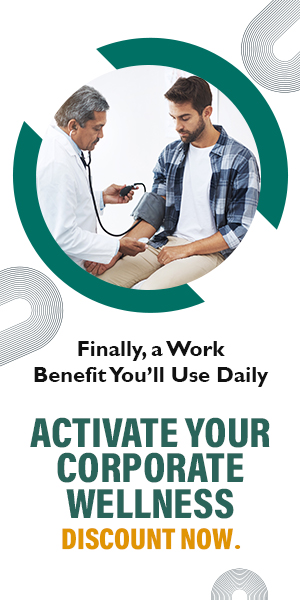Movement
7 Ways To Boost Post-Workout Muscle Recovery
Wondering how to deal with sore muscles after workout? These seven research-backed tips will reduce pain, increase flexibility and maximise the benefits of your workout routine.
In a society where hustle culture is the sign of the times, remember to take a breather. Your body and mind needs time to absorb, to process, to recuperate from any sort of exertion, be it mental or physical. And when it comes to exercise, muscle recovery after working out is key to less pain and more gains.
When we hear the word “recovery”, we usually consider some form of trauma as a prerequisite. So why does working out, which is a constructive and healthy activity, necessitate recovery? In their 2015 book Exercise Physiology, John P. Porcari et al explain this through the example of how stress affects our body’s state of homeostasis. Homeostasis occurs when our internal physical and chemical conditions remain in a state of equilibrium. When we work out, our muscles undergo microscopic tears due to metabolic stress, which disrupts our homeostasis but over time facilitates the after effects of working out like fat loss, muscle gain, increased endurance and overall better body composition. Through sufficient rest and refuelling, our body tries to regain that state of stability, our cells repair and grow our muscles and we are able to avoid unwanted soreness, injuries, illnesses and fatigue.
Therefore, pay no heed to those who shame your rest days. Listen to your bodily needs and focus on eating well, catching up on sleep and engaging in activities you enjoy. Though every exercise and recovery routine is subjective to individual fitness history and goals, here are seven research-backed ways anyone can optimise their muscle recovery time after exercise.
1. Tank up on lemonade or coconut water
Our body loses quite a bit of fluid through sweating when we work out, more so in hot and humid weather. This not only risks dehydration, but also loss of electrolytes. According to a 2013 paper published in the American College of Sports Medicine’s Health and Fitness Journal, proper hydration is necessary to increase skin blood flow and prevent excess body temperature. It is necessary to remain hydrated before, after and during workouts?though author Brad A. Roy suggests that mid-workout hydration should be “according to your thirst sensation; no more or no less”. You can also switch things up by drinking electrolyte-rich natural beverages like lemonade or coconut water. A 2014 research paper in the Journal of the International Society of Sports Nutrition has revealed that drinking tart cherry juice can mitigate inflammation, muscle damage and help in post-workout muscle pain recovery.
2. Snooze for 8 hours or more
Getting enough sleep is a no-brainer in general, but when it comes to muscle recovery, it becomes even more necessary. According to a 2017 paper published by the National Academy of Sports Medicine, the amount of sleep our body needs every night to recover is known as basal sleep and the accumulation of lost or lacking basal sleep is called sleep debt. With the build-up of sleep debt, there is an increase of the stress hormone cortisol, fatigue, and poor day-to-day performance. So, make sure to catch up on as much sleep and rest as you can.
3. Snack on banana and peanut butter
A well-rounded diet with whole and nutritious meals is a basic requirement for any health journey. This includes eating your greens, moderation of junk food, reduction or elimination of alcohol etc. However, intake of protein in particular, is known to aid in muscle repair and growth. The daily recommended protein intake, as suggested by the Indian Council of Medical Research (ICMR), is 0.8 to 1 gram per kilogram of bodyweight. Get your protein fix through meat, fish, fortified dairy, nuts and seeds etc. Carbohydrates, unlike what popular fad diets might tell you, are also necessary for your health and fitness. When we consume carbs, they are broken down into glucose and stored in our livers as glycogen, which can turn into fatty acids with the help of insulin and be used as an energy resource during workouts. The ICMR recommends 50 to 60 percent of calorie intake through carbs, good sources of which are oats, brown rice, quinoa, corn, dates, raisins etc. A 2019 study by Nutrients indicates that “uptake of protein and carbohydrate by shake or food reduces exercise-induced skeletal muscle damage and has pro-regenerative effects”. So combine the goodness of the two with a delicious peanut butter, yoghurt and banana smoothie, or just snack on them as it is. The protein in the peanut butter and yoghurt and the potassium in bananas can help you replenish the amino acids you lose during physical activities, as well as reduce the risk of kidney stones, according to a 2016 paper published in the Clinical Journal of the American Society of Nephrology.
4. Master the downward dog
There’s a reason why warm-ups and cool-downs before and after exercise are crucial in reducing delayed onset muscle soreness (DOMS), regulating your heart rate and preventing injuries and fatigue. Hence, do not skimp on the stretches. In fact, a 2013 paper published in the Strength and Conditioning Journal suggests that recovery stretching needs to be carefully curated and monitored, as unskilled and uninformed stretching can be fruitless. In fact, combine static stretches (butterfly stretch, hamstring stretch, toe reach etc) with dynamic ones (lunges, high knees, heel walks etc) for maximum results. Moreover, yoga is also proven to be an effective medium to combat DOMS. Colleen A. Boyle et al suggest in their study of 24 women (12 trained and 12 untrained), as published in the Journal of Strength and Conditioning, that both yoga training and a single bout of yoga attenuate peak muscle soreness in the participants. You can try the downward dog, the child pose, the cat and cow pose etc.
5. Roll through the pain
Massages using a foam roller is a part of self-myofascial or soft tissue therapy, which can reduce delayed onset muscle soreness (DOMS) when done before or after exercise. A cylindrical tube of compressed foam, this highly popular fitness staple can be used along your glutes, lower back, hamstrings, calves etc to increase muscle flexibility, reduce stiffness and combat sore muscles. Although a part of both pre-workout and post-workout regimes, foam rolling was found to be better suited for warm-ups during a 2019 comparative research study published in Frontiers in Physiology. In fact, evidence was found for Self Myofascial Release (SMFR) through foam rolling to have a larger impact on recovery of strength performance than other tools like roller massagers.
6. Take an ice bath or a hot shower
Compressions using hot water bags or ice packs are both widespread and easily accessible means of pain management. But the two do not have the same effect. Application of heat boosts blood circulation, thus warming up our muscles and reducing stiffness. On the other hand, cold slows circulation, thereby reducing inflammation and post-stress pain. A 2015 study of 100 participants in the Journal of Strength and Conditioning Research concluded that while both heat and cold are impactful for muscle repair, cold is superior when it comes to post-workout muscle pain management. Either way, you can adjust to your body’s needs and take a warm shower to loosen up and destress or soak in an ice bath after an intense workout to reduce inflammation and discard lactic acid (build-up of which causes pain and cramps).
7. Go for a stroll or a swim
If you want to stay moving but don’t have the energy for a high-impact sweat session, we’ve got great news. Recovery and rest don’t have to mean stasis, you can engage in light and relaxing activities without getting tired. Ride a bicycle, take a walk, do some yoga?invite friends, play some music, make a day out of it. This process of low-impact exercise is known as active recovery. A 2006 paper, published in the International Journal of Sports Physiology and Performance, suggests that “water immersion might improve recovery from plyometric or muscle-damaging exercise”, so going for a quick swim is a great idea. However, let us be clear that if your body needs you to lay on the bed and do nothing, that’s fine too.
EXPLORE MORE
Pressed for time but craving results? These high-impact exercises burn maximum calories in minimum time, when done right.
Simple, practical fitness advice to help you feel stronger, healthier, and more consistent in 2026.
Callisthenics isn’t about flashy Instagram moves or avoiding the gym. According to celebrity fitness and lifestyle coach Krishna Sadvale, it’s one of the most practical ways to build strength, control, and confidence in your own body.
A home-based yoga routine can elevate energy, sharpen focus, and nurture mental calm. Discover why it’s worth starting now.







.jpg)
.jpg)

